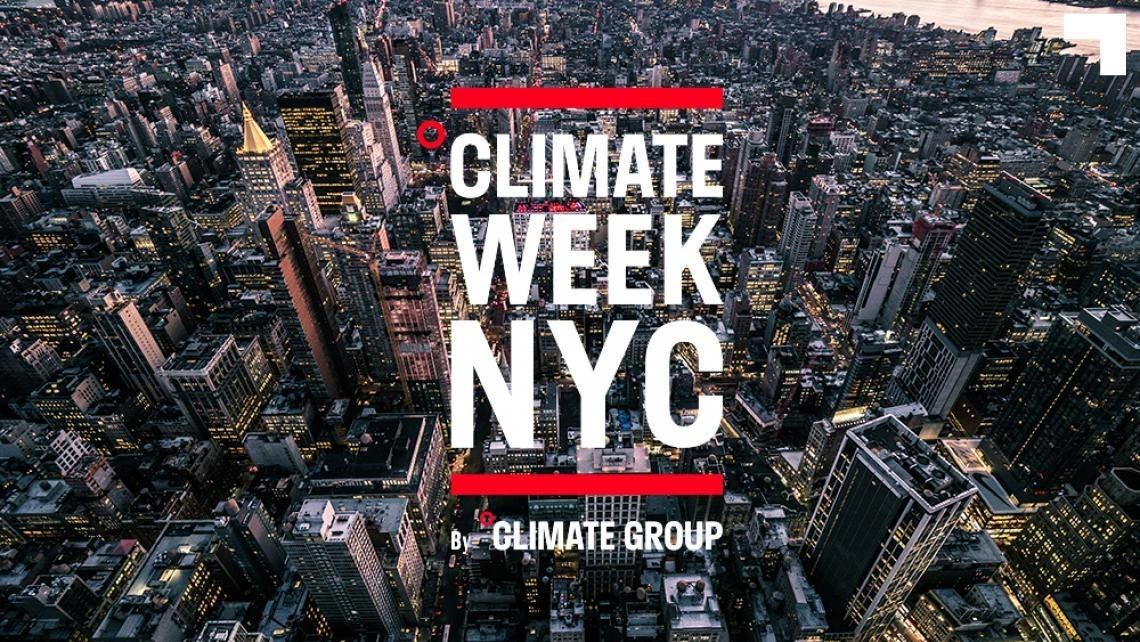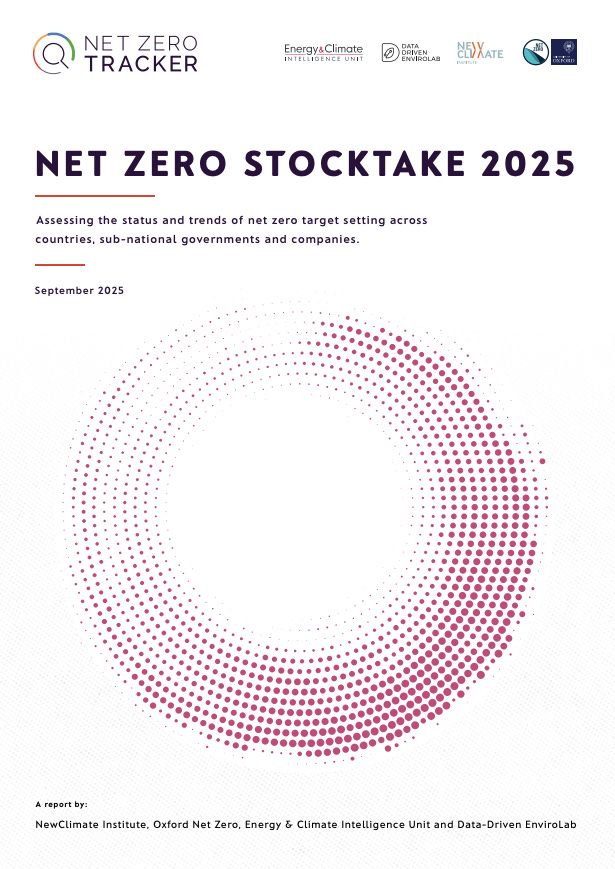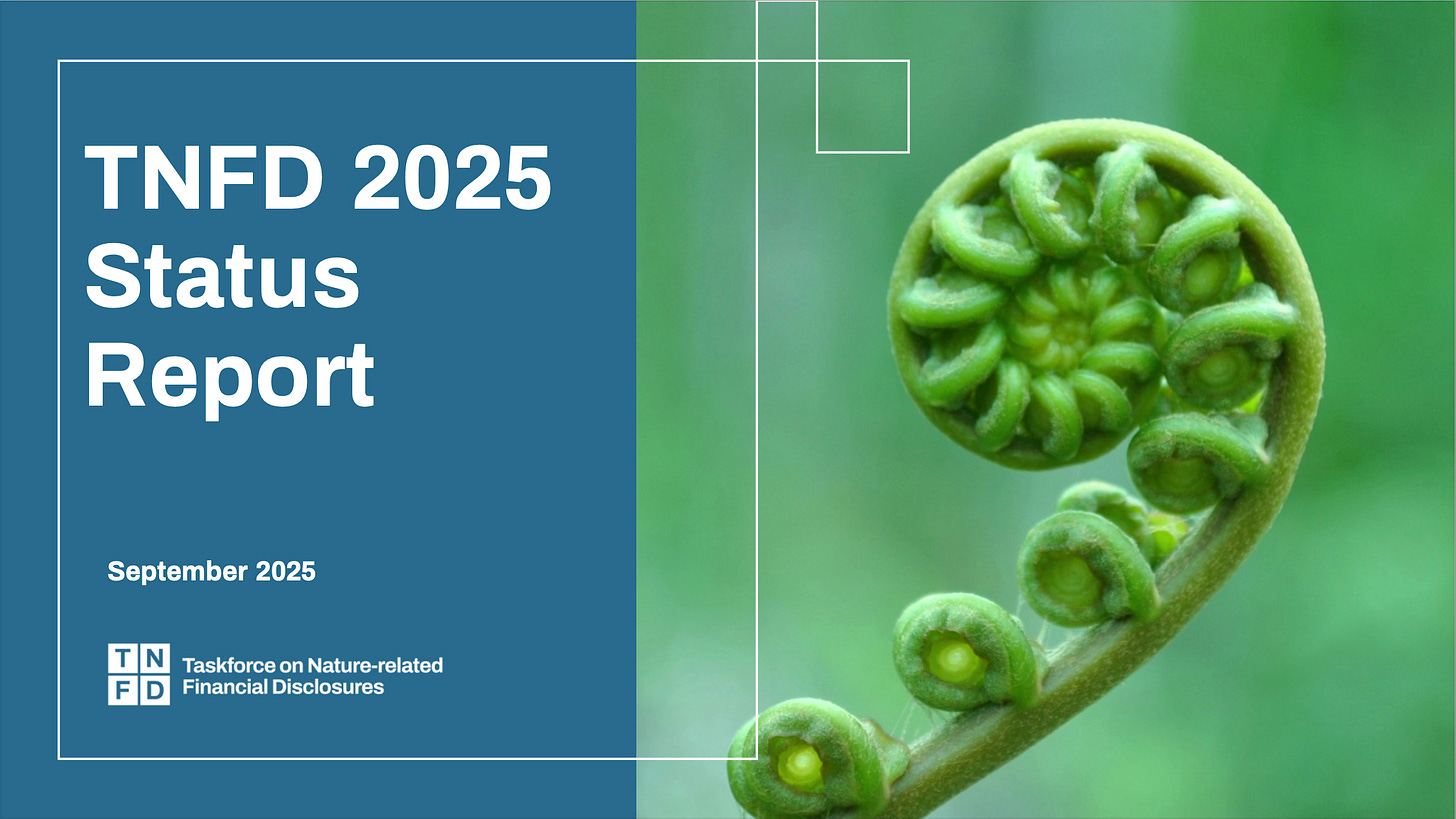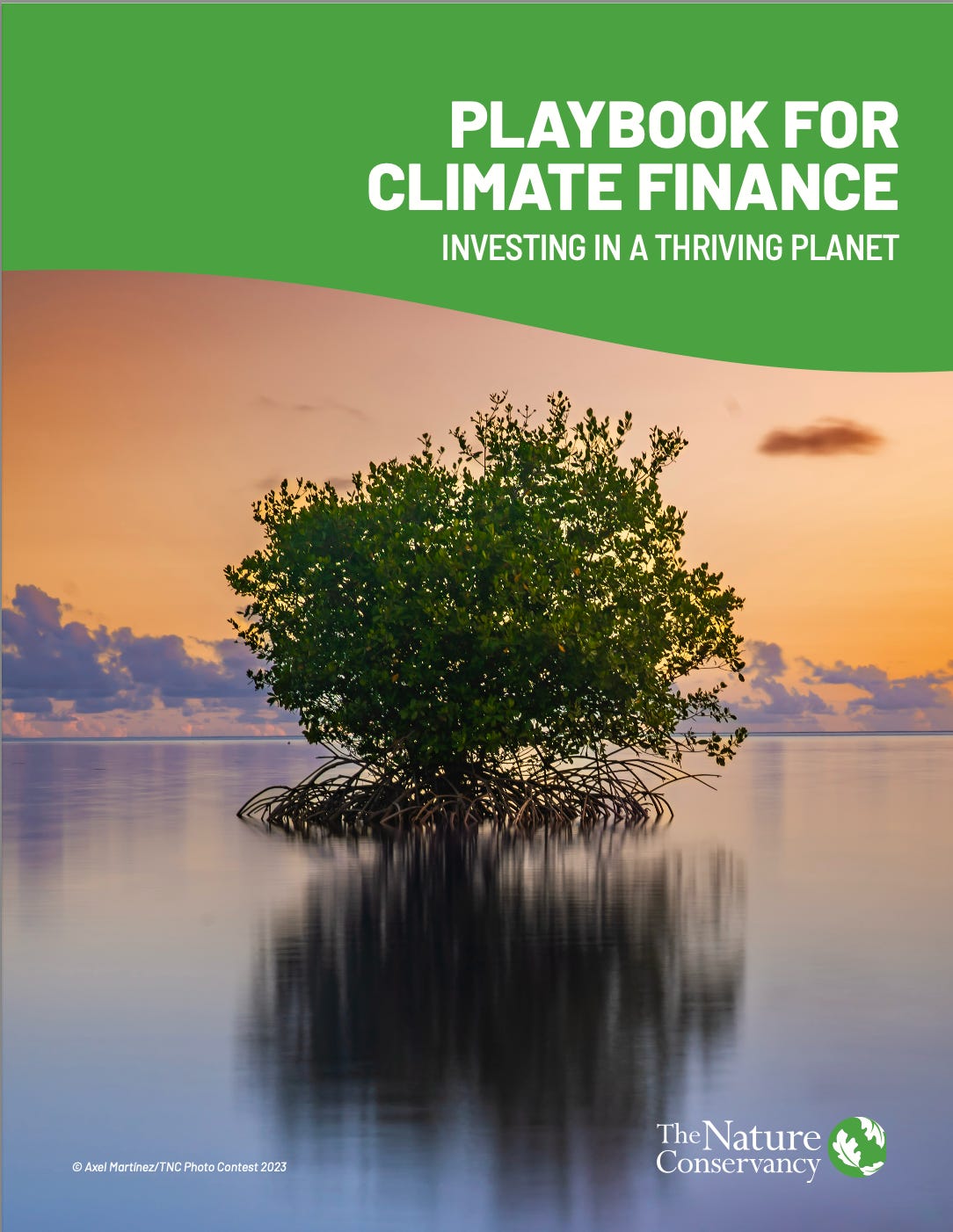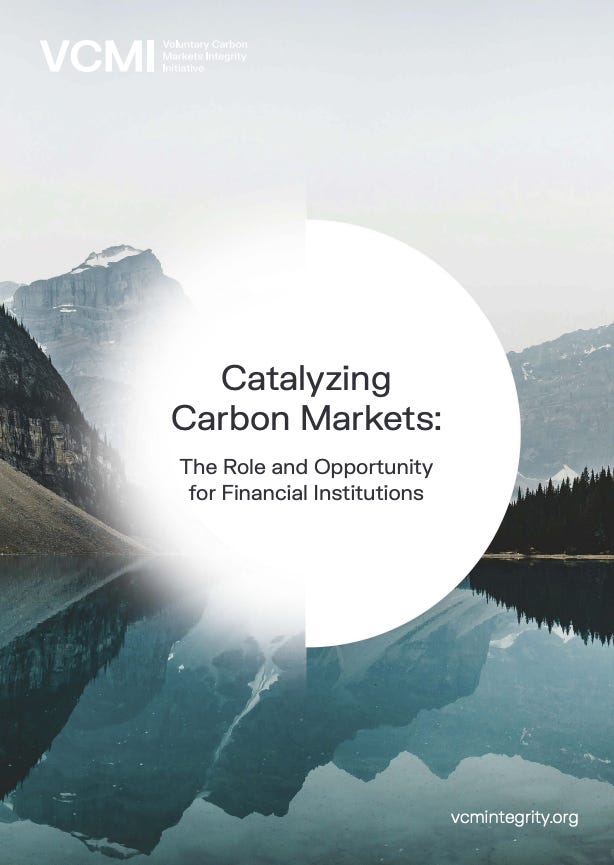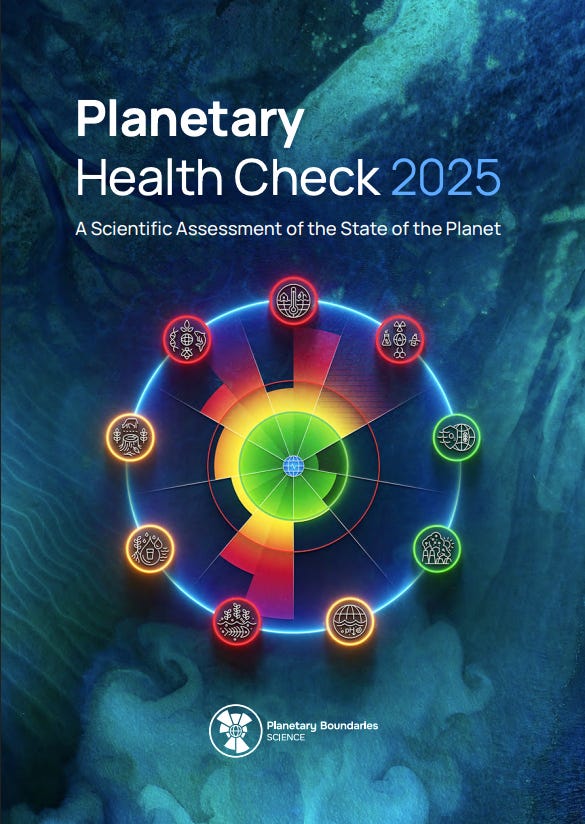David Carlin’s Weekly Digest – Your guide to the big reports from Climate Week NYC 2025
My perspectives and summaries on key sustainable finance reports that were released this week at Climate Week NYC.
Hi All,
Despite a vastly different climate in the US than last year, Climate Week NYC was a big success this year. The week was filled with important announcements, releases, and updates. In this article, I explore what were some of the most consequential reports released this week. Here’s your guide those reports and why they matter.
Net Zero Stocktake 2025 (Net Zero Tracker)
The Net Zero Stocktake 2025 report assesses global progress in net zero target-setting across more than 4,000 entities, including countries, regions, cities, and companies. Despite political headwinds, including the US abandoning its national pledge, momentum has held. Countries representing 74% of global emissions and 77% of GDP now have targets, with nearly two-thirds in law or formal policy. Subnational ambition continues to grow, covering 2.55 billion people, while 63% of publicly listed Forbes Global 2000 companies now have net zero goals worth $36.6 trillion in revenue, with near-universal coverage in Japan and the UK.
However, implementation remains weak. Only 7% of companies, 6.5% of regions, and 4% of cities meet minimum credibility standards, with many commitments lacking interim milestones, Scope 3 coverage, or clarity on offset use. Nature-based removals are increasingly cited, but just 4% of firms set explicit targets, raising concerns about durability and over-reliance on land. Commitment gaps also persist, with more than 50 countries and over 400 major companies still without any mitigation pledges.
My View
This stocktake report underscores that despite the challenging year for sustainability, decarbonization remains a global norm. What is notable this year is not the backtracking of commitments, but how many organizations have upped their ambition or retained the net-zero targets. The real test now is credibility. Just as net-zero target-setting gave way to transition planning, the time for implementation and action is now.
TNFD 2025 Status Report (Taskforce on Nature-related Financial Disclosures)
The TNFD 2025 Status Report marks two years since the release of the Taskforce’s recommendations and provides the first market-wide assessment of nature-related reporting. Engagement is accelerating as over 1,800 organisations have joined the TNFD Forum, 620 institutions with $20 trillion in assets have committed to align reporting, and more than 500 first- and second-generation reports have been published. Analysis of early disclosures shows most companies start with risk management, governance and water-related metrics, while reporting on targets and scenario analysis remains limited. Encouragingly, 78% of preparers integrating climate and nature disclosures are moving towards a more holistic approach.
Investors are calling for greater consistency. Three-quarters of asset managers and owners want a dedicated nature standard, and central banks through the NGFS are beginning to treat nature loss as a systemic financial risk. Persistent barriers include uneven data quality, complex metrics and capability gaps across sectors and geographies.
My View
This report shows growing momentum in nature-related financial reporting. However, persistent challenges remain in getting companies and governments to fully value nature. Those limitations go beyond data gaps or reporting standards to operating models that do not fully account for the nature-related risks and impacts faced. The TNFD’s LEAP approach has been a powerful guide for effective analysis, but too few organizations have the skills and tools to really implement better practices around nature risk assessment and management.
Playbook for Climate Finance 2025 (The Nature Conservancy)
The Playbook for Climate Finance 2025 from The Nature Conservancy sets out ten innovative financial tools to accelerate investment in climate and nature. Against the backdrop of record-breaking disasters and climate damages projected at $145 billion in 2025, the report underscores that climate finance is both a moral and economic necessity. Global climate finance surpassed $2 trillion in 2024, but annual needs are estimated at $7.4 trillion through 2030, creating a steep gap that demands faster mobilisation of capital.
The document highlights solutions ranging from community-driven savings and impact investment funds to sovereign debt refinancing, ecosystem insurance, blue carbon markets and blended finance for adaptation. These case studies demonstrate how tailored instruments can direct resources toward Indigenous communities, sustainable supply chains, coastal resilience and regenerative agriculture, while also delivering competitive returns. The report concludes that the tools to scale climate finance already exist, but leadership, partnerships and urgency are needed to bridge the finance gap and embed equity at the centre of climate and nature solutions.
My View
This playbook helps make the case that innovation in climate and nature finance is no longer the bottleneck. The real challenge is deployment at speed and scale. Financial institutions and governments need to move from pilots to broader application across markets. There should be a call to make environmental finance boring. It is only when it is repeatable and well-structured that it can have the scale needed. That said, there is a real benefit for early movers. They will be best positioned to close the funding gap and capture both the economic returns and resilience dividends of climate investments.
Catalyzing Carbon Markets: The Role and Opportunity for Financial Institutions (VCMI)
The Catalyzing Carbon Markets report from the Voluntary Carbon Markets Integrity Initiative (VCMI) highlights the growing opportunity for financial institutions to shape and scale high-integrity carbon markets. Market growth is projected from $1.4 billion last year to $40–250 billion in the next couple of decades, driven by demand for credible climate solutions. For financial institutions, the potential lies in core activities such as advisory, capital markets structuring, fund management, trading, and procurement, policy engagement and risk management. These roles can mobilize capital into emissions reduction and removal projects while opening new revenue streams, enhancing client relationships, and positioning early movers as market leaders.
Yet barriers remain. Financial institutions cite uncertain demand, reputational risk, regulatory ambiguity, and limited financing mechanisms as key limitations. Many carbon projects lack bankable structures, with high upfront costs and volatile revenue streams deterring traditional lenders. At the same time, reputational concerns around credit quality and transparency continue to suppress demand. The report identifies solutions such as insurance to mitigate delivery and political risks, diversified funding mechanisms to address the “valley of death” in project finance, and stronger regulatory alignment to provide legal clarity on carbon credits. With these enablers, financial institutions could play a catalytic role in transforming carbon markets from a fragmented, high-risk space into a mainstream asset class.
My View
This report helps to make clear that high-integrity carbon markets are both a climate necessity and a commercial opportunity. Financial institutions are uniquely positioned to contribute to this critical space, but they must move into capital allocation, risk-sharing, and market-making. With rising awareness of the scale of the climate challenge, demand for mitigation solutions is only rising. Credible carbon markets can help accelerate the deployment of important and innovative solutions.
Planetary Health Check 2025 (Planetary Boundaries Science)
The Planetary Health Check 2025 provides an integrated assessment of the Earth’s climate, biodiversity and pollution boundaries, concluding that seven of nine planetary boundaries have now been breached. Global average temperature has reached 1.45°C above pre-industrial levels, with a 50% chance of surpassing 1.5°C before 2030. Biodiversity loss is accelerating, with vertebrate populations down 69% since 1970 and deforestation persisting at 10 million hectares per year. Freshwater systems remain under severe stress, with over 2 billion people exposed to high water scarcity. Meanwhile, pollution from plastics and chemicals continues to intensify, with plastic waste projected to double by 2040.
The report highlights a mixed picture of response. Renewable energy capacity doubled between 2015 and 2024, yet fossil fuel subsidies were $1.7 trillion in 2024. The biodiversity finance gap remains at $700 billion annually, while adaptation finance falls short by more than $200 billion per year. The report calls for systemic reforms: phasing out harmful subsidies, mobilising green finance at scale, and embedding planetary boundaries into economic planning and governance.
My View
This report makes clear how far we are pushing past Earth’s safe limits. Seven of nine planetary boundaries are already breached, with pressures from climate, biodiversity, water and pollution converging. Despite these warning signals, action is not happening fast enough from political and business leaders. As a result, significant risks are rising. We are already seeing this in the worsening of climate-related impacts and the erosion of ecosystem services. What is concerning is how we continue to approach (and potentially surpass) critical tipping points in natural systems. Two truths are obvious and not contradictory: we need to get back within safe planetary boundaries, and we need to prepare for an already changed world.
Enjoyed this summary and analysis? D. A. Carlin & Co helps clients navigate these turbulent times through strategic briefings, practical capacity-building workshops, and regulatory support. Book a call with us today (email: info@dacarlin.com) and find out how we can give you and your team the future-ready skills and strategies you need.
Read more and sources:


